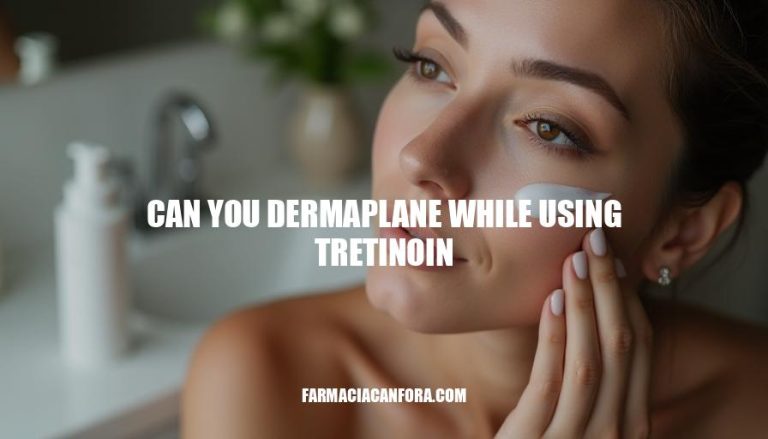


Dermaplaning is a way to gently remove dead skin cells and fine hair from your face using a special tool. It helps make your skin look smoother, feel softer, and lets products work better. You can get it done at a salon or spa by a trained professional, or you can buy a dermaplaner for home use.
Tretinoin is a cream that comes from vitamin A.
It’s used to help your skin renew itself, reduce acne, and make fine lines less noticeable. There are different strengths of tretinoin available, so it’s tailored to what you need. It can be a bit harsh on the skin at first, but it really helps with anti-aging and acne.
Some people wonder if they can use dermaplaning and tretinoin together.
The problem is that tretinoin can make your skin more sensitive, and dermaplaning can be too much for some skin types. If you’re using tretinoin, you might want to wait a bit before getting dermaplaning done, or talk to a dermatologist about how to do it safely.
Tretinoin is a potent topical retinoid that accelerates skin cell turnover, leading to exfoliation and the shedding of dead skin cells. This process helps improve acne, fine lines, and hyperpigmentation but also increases skin sensitivity, making it more prone to irritation, dryness, and redness. Additionally, tretinoin heightens the skin’s vulnerability to environmental factors, particularly UV radiation, necessitating diligent sun protection.
Dermaplaning is a physical exfoliation technique that removes the top layer of dead skin cells and fine vellus hair using a scalpel.
It enhances skin smoothness, promotes a brighter complexion, and allows for better absorption of skincare products. However, because tretinoin already induces exfoliation and skin sensitivity, combining it with dermaplaning can lead to excessive irritation, redness, and potential damage to the skin barrier.
For individuals using tretinoin, dermaplaning is generally not recommended unless proper precautions are taken. Experts suggest discontinuing tretinoin for several days before and after dermaplaning to allow the skin to recover.
Hydration and barrier-repairing ingredients, such as hyaluronic acid and ceramides, should be prioritized post-procedure to minimize irritation. Alternatives to dermaplaning include gentler exfoliation methods, such as enzyme-based exfoliants or mild chemical exfoliants, which provide smoother skin without excessive disruption to the skin barrier.
Careful consideration and consultation with a dermatologist are advised before incorporating dermaplaning into a skincare routine that includes tretinoin.
1www.healthline.com2www.goodrx.com3www.medicinenet.com4my.clevelandclinic.org5www.webmd.com
Using dermaplaning while taking tretinoin can be problematic due to increased skin sensitivity caused by tretinoin. Dermaplaning can further irritate the skin, leading to excessive redness and potential damage to the skin barrier.
If you’re using tretinoin, it’s recommended to wait a few days before getting dermaplaning done or consult with a dermatologist for guidance on how to proceed safely. To minimize irritation, prioritize hydration and use barrier-repairing ingredients like hyaluronic acid and ceramides after the procedure.
Alternatives to dermaplaning include gentler exfoliation methods such as enzyme-based exfoliants or mild chemical exfoliants that can provide smoother skin without disrupting the skin barrier. It’s essential to consult with a dermatologist before incorporating dermaplaning into your skincare routine if you’re already using tretinoin.